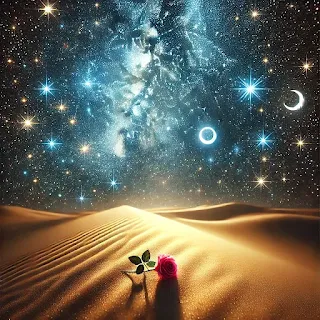The Little Prince: The Greatest Life Lessons Hidden in a Timeless Tale
"What is essential is invisible to the eye." This singular line from Antoine de Saint-Exupéry's The Little Prince encapsulates the heart of a story that has enchanted millions across generations. But beneath its whimsical narrative lies a profound meditation on love, loss, and the fragile beauty of human connections.
In this article, we dive deep into the essence of The Little Prince, exploring its timeless wisdom, philosophical undertones, and enduring impact on readers worldwide.
A Story That Begins with Wonder
Imagine being stranded in the vast Sahara Desert, the silence so profound it feels alive. Suddenly, a golden-haired child appears, asking you to draw a sheep. What would you do? This is where the magic of The Little Prince begins—a tale that speaks to the child within us all.
The narrator, a pilot, crashes in the desert and meets the Little Prince, a boy from a distant asteroid. Their conversations, simple yet profound, form the backbone of a story that questions the meaning of life, love, and what it means to grow up.
The Little Prince’s Journey Across the Cosmos
The Little Prince’s journey takes him to several asteroids, each inhabited by a peculiar adult. These characters are not just whimsical; they are mirrors reflecting the absurdities of the adult world.
1. The King
A ruler with no subjects, the King demands obedience for its own sake. He symbolizes the futility of power when it is detached from purpose.
2. The Vain Man
Obsessed with admiration, the Vain Man represents humanity’s fragile ego and our relentless craving for validation.
3. The Drunkard
The Drunkard drinks to forget his shame of drinking—a tragic figure trapped in a cycle of self-destruction.
4. The Businessman
Counting stars as though they were currency, the Businessman embodies materialism and the illusion of ownership.
5. The Lamplighter
Endlessly lighting and extinguishing a lamp, the Lamplighter symbolizes the loss of meaning in blind routines.
6. The Geographer
The Geographer records knowledge but never experiences the world himself, highlighting the emptiness of knowledge without action.
Through these encounters, the Little Prince exposes the absurdities of adult priorities, urging readers to reconsider their own.
The Rose: A Fragile Symbol of Love
On his tiny planet, the Little Prince cares for a single Rose. She is proud, demanding, and vulnerable, yet she teaches him the true meaning of love: responsibility.
"You become responsible, forever, for what you have tamed." These words from the Fox, whom the Prince meets later on Earth, echo the essence of his relationship with the Rose. Love is not about possession but about care, understanding, and sacrifice.
The Rose’s fragility mirrors the fragility of all relationships. It is through nurturing and commitment that we give them meaning.
Earth: Lessons in Connection
When the Little Prince arrives on Earth, he meets a Fox who offers him the story’s most profound lesson:
"One sees clearly only with the heart. What is essential is invisible to the eye."
The Fox teaches the Prince the value of relationships and the bittersweet nature of attachment. To “tame” someone is to create a bond that makes them unique in the vastness of the universe.
But with connection comes vulnerability. The Prince learns that love and loss are intertwined, yet it is through these experiences that life becomes meaningful.
The Ending: A Return to the Stars
The Little Prince’s departure is both heartbreaking and uplifting. His quiet acceptance of his fate—a return to the stars—is a poignant reminder of life’s transient nature and the enduring power of love.
For the pilot, the Prince’s absence leaves a void, but it also rekindles a sense of wonder. Every star in the sky becomes a reminder of the Little Prince’s laughter, a symbol of the connections that outlast time and space.
The Philosophy of The Little Prince
1. Rediscovering Wonder: The story challenges readers to reconnect with the curiosity and imagination of childhood.
2. The Nature of Love: Love is portrayed as an act of responsibility and care, rather than possession.
3. Critique of Adulthood: Through its characters, the book critiques the absurdities of adult life, from materialism to blind ambition.
4. Mortality and Transcendence: The Little Prince’s journey is a meditation on life, death, and the eternal connections that outlast both.
Why The Little Prince Is Timeless
Since its publication in 1943, The Little Prince has been translated into over 300 languages and dialects, making it one of the most widely read books in history. Its universal themes resonate with readers of all ages, offering new insights with each reread.
Antoine de Saint-Exupéry’s poetic prose, paired with his own delicate illustrations, creates a world that feels both intimate and infinite. The story’s simplicity belies its depth, making it a masterpiece that transcends genre and time.
Final Reflections: An Invitation to Wonder
As you finish reading The Little Prince, take a moment to look up at the stars. Somewhere, among the countless points of light, a golden-haired child is laughing, reminding us of everything we once knew but forgot.
What does The Little Prince mean to you? How has it changed the way you see the world? Share your thoughts and keep the conversation alive—because, like the Little Prince himself, this story is eternal.




